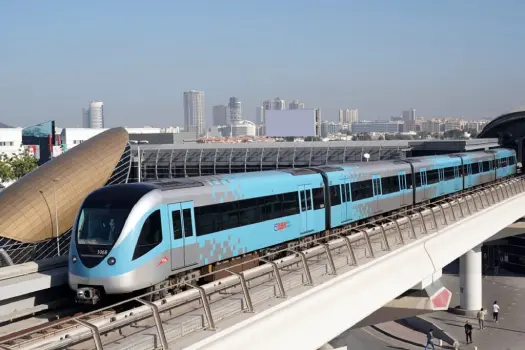Metro

The Namma Metro has become a crucial part of Bengaluru’s infrastructure, easing traffic congestion and improving connectivity. As the city’s rapid expansion continues, the metro system is significantly influencing real estate demand, particularly near key metro corridors. Godrej Tiara, strategically located near the metro, stands as a prime example of how seamless connectivity enhances property value and urban living. This article provides insights into the metro’s development, its impact on the real estate market, and future expansion plans shaping Bengaluru’s urban landscape.
Comprehensive Overview of Bengaluru Metro
Evolution and Expansion
The Namma Metro began operations in 2011, marking the launch of South India’s first underground metro system. Over the years, it has expanded into India’s second-longest metro network, covering 73.75 kilometers. The system consists of underground, elevated, and at-grade stations, connecting major business districts, residential areas, and commercial hubs.
Key Operational Insights
As of Jan 2025, the Bengaluru Metro operates across 66 stations, categorized as follows:
- 57 elevated stations
- 8 underground stations
- 1 at-grade station
Trains run daily from 05:00 to 24:00, with frequencies between 3 to 15 minutes. Initially, the metro operated three-coach trains, but six-coach trains were introduced to accommodate increasing ridership. The metro currently serves 756,000 passengers daily, with peak ridership reaching 819,000 in July 2024.
Technological Advancements
The metro system runs on standard-gauge tracks, powered by 750V direct current through a third rail. These technological enhancements ensure smooth, efficient, and eco-friendly operations, making the Bangalore Metro expansion a vital part of the city’s urban mobility strategy.
The Impact of Bengaluru Metro on Real Estate
Strategic Importance of Metro-Connected Properties
The demand for properties near metro stations has increased, as connectivity plays a crucial role in urban real estate investment. Areas along Bangalore’s metro corridors have witnessed significant property appreciation, attracting both homebuyers and investors. Godrej Tiara, for example, is 1.3 kilometers from Goraguntepalya Metro Station, providing seamless access to public transport.
Rising Demand for Real Estate Near Metro Stations
The metro has played a pivotal role in reducing traffic congestion, making metro-connected residential properties highly desirable. Projects like Godrej Tiara benefit from proximity to Green Line Metro stations, offering better connectivity and premium amenities.
Accessibility to Key City Hubs
Godrej Tiara enjoys direct access to major city routes:
- NH 4 – Connecting western Bengaluru to commercial hubs and IT corridors.
- Peenya Industrial Area – One of Asia’s largest industrial zones, offering job opportunities for professionals.
- NH 75 – Linking northern Bengaluru with key employment centers.
Key Metro Stations on the Green Line
The Green Line Metro plays a crucial role in Bengaluru’s real estate development. Important stations include:
- Nagasandra Metro Station – Terminal station linking northern Bengaluru to the city center.
- Peenya Industrial Area Metro Station – A vital station for professionals working in Asia’s largest industrial hub.
- Goraguntepalya Metro Station – Located just 1.3 kilometers from Godrej Tiara, offering seamless daily commuting.
- Yeshwanthpur Metro Station – A major transport hub connecting to railway and bus terminals.
- Majestic Metro Station – The largest interchange station, linking the Green Line with the Purple Line for city-wide travel.
Full List of Green Line Metro Stations
- Silk Institute Metro Station (Green Line Terminal)
- Konanakunte Cross Metro Station
- JP Nagar Metro Station
- R.V Road Metro Station (Connects to Yellow Line)
- Jayanagar Metro Station
- Lalbagh Metro Station
- Majestic Metro Station (Connects to Purple Line)
- Sampige Road Metro Station
- Rajajinagar Metro Station
- Yeshwanthpur Metro Station
- Goraguntepalya Metro Station (Near Godrej Tiara)
- Peenya Industrial Area Metro Station
- Dasarahalli Metro Station
- Nagasandra Metro Station
Connectivity and Future Metro Developments
Bengaluru Metro’s Current Connectivity
The Bangalore Metro network connects northern and southern Bengaluru, facilitating travel to commercial, industrial, and residential areas. Key locations, including Rajajinagar, Jayanagar, and Peenya, benefit from the metro’s seamless connectivity and reduced commute times.
Future Expansion Plans
The Bengaluru Metro expansion includes the introduction of the Yellow Line, along with extensions of the Green and Purple Lines. These projects will significantly enhance metro accessibility, boosting demand for metro-connected properties in Bangalore. Areas such as Sarjapur Road and East Bangalore are expected to see increased real estate value due to improved transit connectivity.
How Metro Expansion Enhances Property Value
The presence of metro stations near residential projects increases property demand and investment potential. Benefits of living in metro-connected locations include:
- Reduced travel time and lower transportation costs
- Better connectivity to business and employment hubs
- Higher appreciation of real estate investments
- Improved urban infrastructure and sustainable living
Conclusion
The Bengaluru Metro is more than a transport system—it is a catalyst for real estate transformation. With further metro expansions underway, investing in metro-connected properties such as Godrej Tiara is a smart decision for both homebuyers and investors. As Bangalore’s urban infrastructure grows, the metro corridor remains the backbone of the city’s real estate market.
FAQs – Frequently Asked Questions
The Bengaluru Metro, also known as Namma Metro, is South India’s first underground metro system and India’s second-longest metro network, featuring elevated, underground, and at-grade stations.
Metro connectivity has significantly increased property demand near key metro stations, driving higher real estate investment opportunities.
Residents benefit from quick public transport access, reduced commute times, lower costs, and enhanced quality of life.
Upcoming expansions, including the Yellow Line and Green & Purple Line extensions, will further boost property demand and real estate values.
Developments such as Godrej Tiara, located near Goraguntepalya Metro Station, offer luxury residences with excellent metro connectivity.